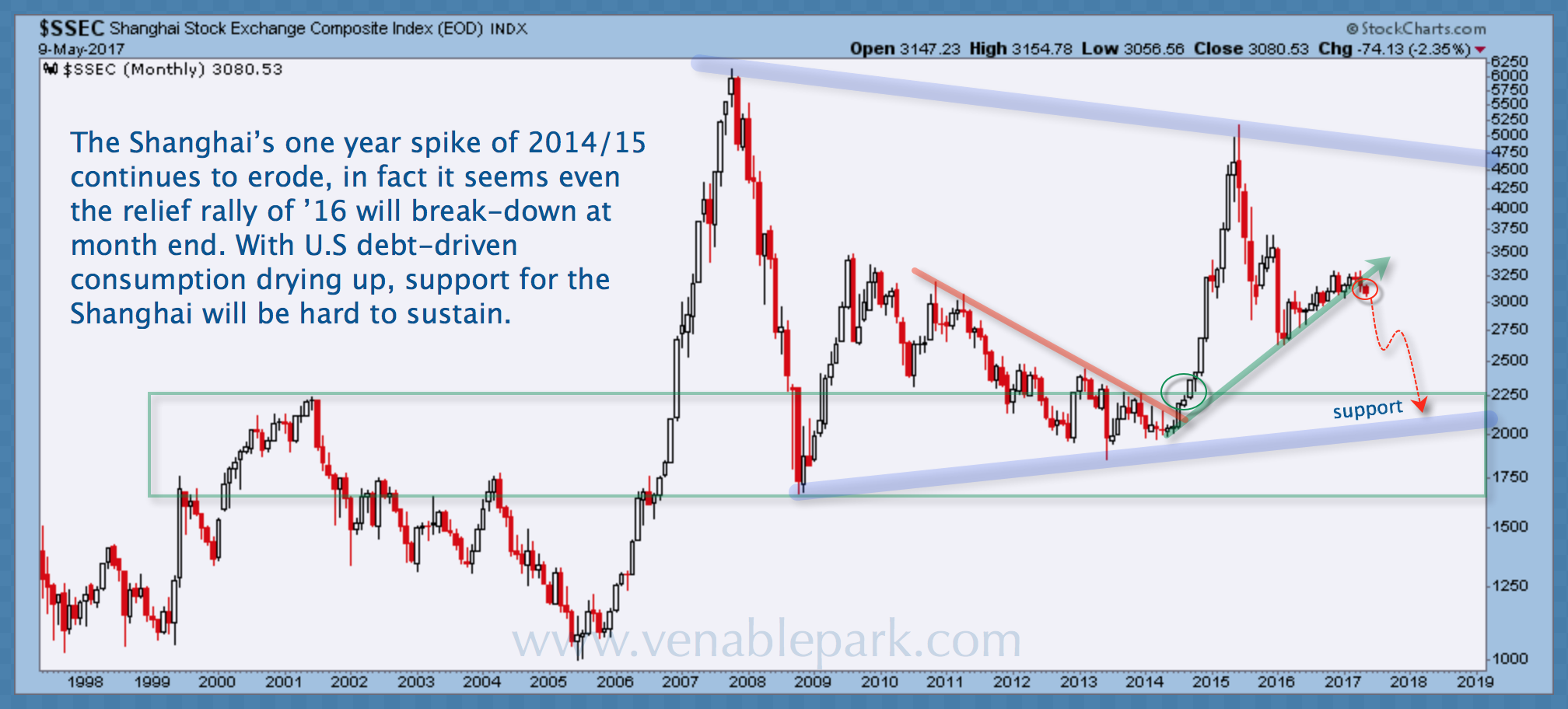After topping 6000 in August 2007 on the hype and hope of voracious consumer demand during the subprime debt bubble, the Chinese Shanghai Composite Index collapsed 74% to 1585 by October 2008. From that cyclical low the market then recovered 68% of its losses to crest at 4594 in May 2015. Now back at 3052, the index remains still 50% below its 2007 peak, 10 years later.
This is how a secular bear moves: beginning from outrageous valuations and irrationally optimistic forecasts, stock prices move through manic swings, lots of risk and no net progress, typically for 15 to 20 years. As shown below, price is currently below the 2014 rally support, with a retest of the 2008 low still likely in the months ahead.

This is not just a Chinese market story. A similar secular valuation and sentiment cycle has been driving the highly correlated international stock markets as well.
The Shanghai led the US stock market by 4 to 5 months at the peak of the last expansion (Dow peaked Dec 2007, Shanghai in August 2007) and trough (Dow in March 2009, Shanghai in October 2008). Similar correlations are likely to follow this time as well.

